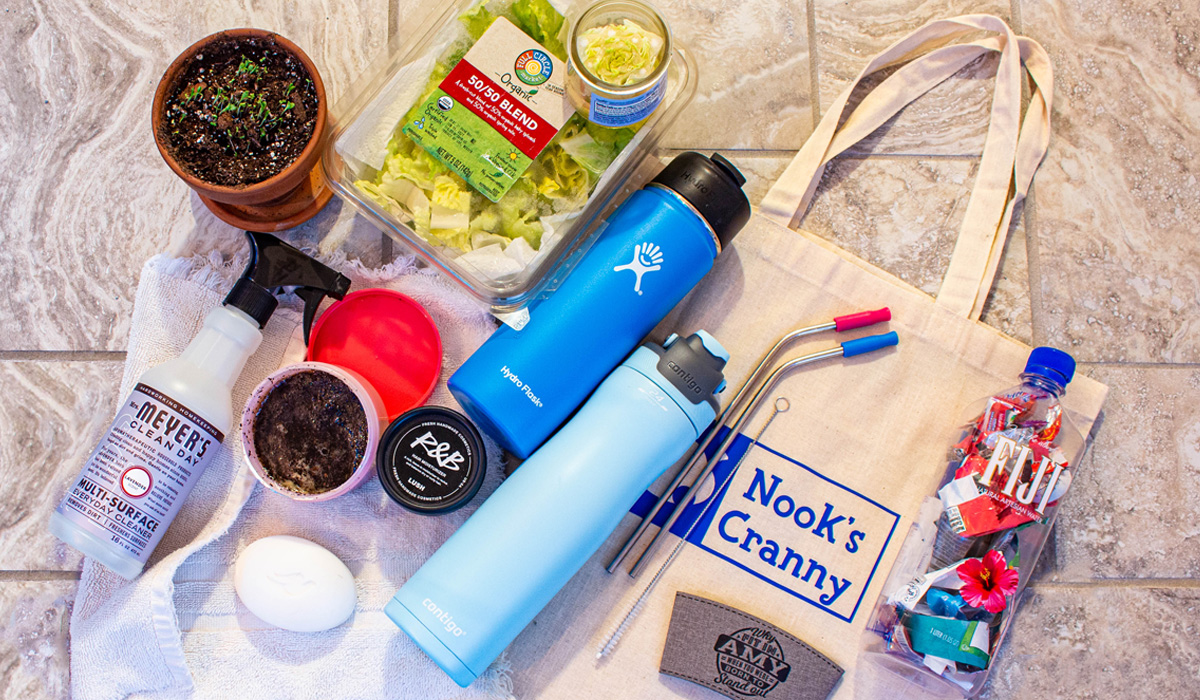
Reducing, Reusing, and Recycling aren’t going to cut it if we want to make it to the year 3000 where we all hope to be living underwater (as the Joe Bros put it). At this rate, after watching Seaspiricy on Netflix, we will be in submarines with thousands of dead fish floating around us and our great great great granddaughter–is NOT doing fine.
What is sustainability?
Environmental sustainability is taking on the responsibility of interacting with the planet to maintain natural resources and avoid jeopardizing the ability for future generations to meet their needs. Things such as reducing your personal carbon footprint, reducing the use of single use plastics, and shopping second hand are all great examples of how one can practice being sustainable.
An easy way for me to practice sustainability is that whenever I go shopping, I ask “how many lives can I get out of this product?” By life, I mean how many ways I can re-use or repurpose this product to give it a second, third or even fourth life? The more lives you get from a product, the more sustainable it will be. Let me give you some of my personal favorite tips and tricks on being more sustainable and how to make everyday earth day.
How to Make Everyday Earth Day
Invest in a Reusable Single-Use Plastics
Water Bottle for School
I invested in a metal leak-proof water bottle with a handle to use as my main water bottle to help reduce my single use plastic waste.
Pro Tip: Have one designated water bottle, or mug, specifically for what it is carrying. Over the years, I’ve learned that it’s best to have one water bottle designated for each purpose. I have one that’s just for water, one that’s just for tea, and another just for coffee. This helps ensure that I always have the freshest tasting water and helps to prevent the flavor profiles from mixing.
Reusable Straws & Other Re-Useable Single Use Plastics
“Save the Sea Turtles” has been a slogan for years, which has caused several major companies such as Starbucks to reinvent their packaging to help avoid single use plastic waste.
Investing in a set of reusable straws for at home or to stick on your keychain is another great way to help minimize the use of single-use plastics.
Give Your Product a Second Life & Shop Second Hand
Now before you start filling up your virtual shopping cart with eco-friendly products – hear me out. You are actually being counter-productive if you make the switch all at once. Think about what sustainability really means–finding a second life for your product.
Before throwing something out, ask yourself “how can I give this product another life?” Could you reuse it for something else at home? Could you paint it and sprinkle some glitter on it and transform it into something new? Is this something of value that you could sell or donate? If yes–then do it.
On the flip side, thrifting clothes and shopping second hand has always been my go-to. Want already broken in jeans? Skip the shipping with Shein and visit your local thrift stores to see what they have.
Wash & Deconstruct Recyclables
Did you know that not everything you put in your recycling bin actually gets recycled? Taking the extra step of washing out the containers and deconstructing them (such as breaking down boxes, ripping off paper labels, etc.) will exponentially increase their chances of getting recycled once they reach the facility.
Start a Bottle Brick
Elevate your recycling game to the next level by starting a bottle brick. Grab your nearest disposable plastic water bottle, a pair of scissors, a garbage can and start your very first bottle brick. A bottle brick is a plastic bottle that is packed tightly with single use plastics and packaging to create a brick of plastic.
Not only does this help condense the amount of single use plastics from floating in our oceans but you can donate your filled bottle bricks to various accepting locations.
Shop with Sustainability in Mind
Everything we buy comes in packaging. Think about Halloween candy, hundreds of bite sized pieces of individually wrapped candy that comes in a bigger bag of plastic – that was probably put into another plastic bag as you walk out of the store.
Personal hygiene products are a huge source of single use plastics that are nearly unavoidable to purchase. Here are some of my tips and tricks to help reduce waste on your self-care routine:
- Get bars of soap, shampoo, and even lotions come in bars now too!
- DIY your own beauty care products. Love sugar scrubs? Instead of buying another when you run out – make one at home! All you need is some sugar, oil, a little liquid soap, and essential oils to make a buttery scrub for your body.
- Invest in a reusable razor that you can replace the single blade.
- Shop small and support sustainable makeup brands. Etsy is a great place to find and support sustainable brands.
We all need to step up our sustainability game in 2021 and take better care of our planet. We won’t be able to reverse climate change until we all collectively decide to do better. As a community of learners committed to improving our world, we have the power to make changes that ensure plenty of natural resources for future generations to come.